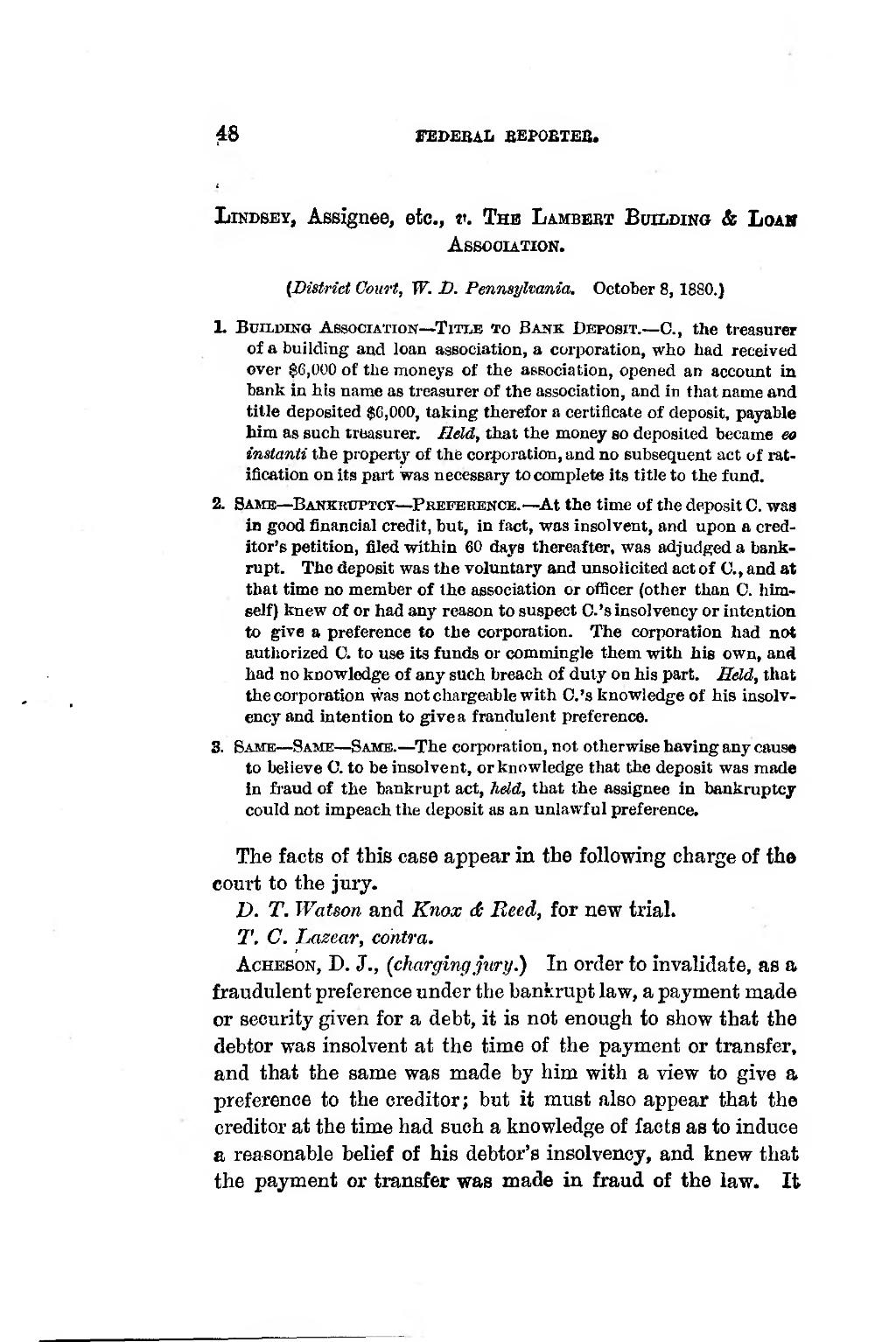48 7EDSBAL BEPOBI£B. ���LiNDSBY, Assignee, etc., v. Thb Lambebt Building & Loah �AsSOOliTION. (District Court, W. H. Pennsylvania. October 8, 18S0.) �L BniLoiNa Association— Titlb to Bank Deposit. — C, the treasurer of a building aud loan association, a corporation, who had received over $6,000 of the moneys of the association, opened ai> account in bank in his name as treasurer of the association, and in that name and title deposited $6,000, taking therefor a certiflcate of deposit, payable him as such treasurer. iZ«W, that the money so deposited became eo instanti the property of the corporation, and no subsequent act of rat- ification on its part was necessary to complete its title to the fund. �2. Same — Bankrbptct — Prepbrbnce. — At the time of the deposit C. waa �in good financial credit, but, in fact, was insolvent, and upon a cred- itor's petition, flled within 60 daya thereafter, was adjudged a bank- rupt. The deposit was the voluntary and unsolicited actof C, and at that time no member of the association or ofBcer (other than 0. him- gelf) knew of or had any reason to suspect C.'s insolvency or intention to give a preference to the corporation. The corporation had not autliorized C. to use its funds or commingle them with his own, and had no knowledge of any such breach of duly on his part. Held, that the corporation was not chargeable with C.'s knowledge of his insolv- ency and intention to givea fraudulent preference. �3. SAiiB — Saivœ: — Samb. — The corporation, not otherwise having any cause �to believe C. to be insolvent, or knowledge that the deposit was made in fraud of the bankrupt act, held, that the assignee in bankruptcy could not impeach the deposit as an unlavvf ul preference. �The facts of this case appear in the following charge of tho court to the jury. �D. T. Watson and Knox & Beed, for new trial. �T. C. Lazear, contra. �AcHESON, D. J., (chargingjury.) In order to invalidate, as a fraudulent preference under the bankrupt law, a payment made or security given for a debt, it is not enough to show that the debtor was insolvent at the time of the payment or transfer, and that the same was made by him with a view to give a preference to the creditor; but it must also appear that the crediter at the time had such a knowledge of facts as to induce a reasonable belief of his debtor's insolvency, and knew that the payment or transfer was made in fraud of the law. It ����
